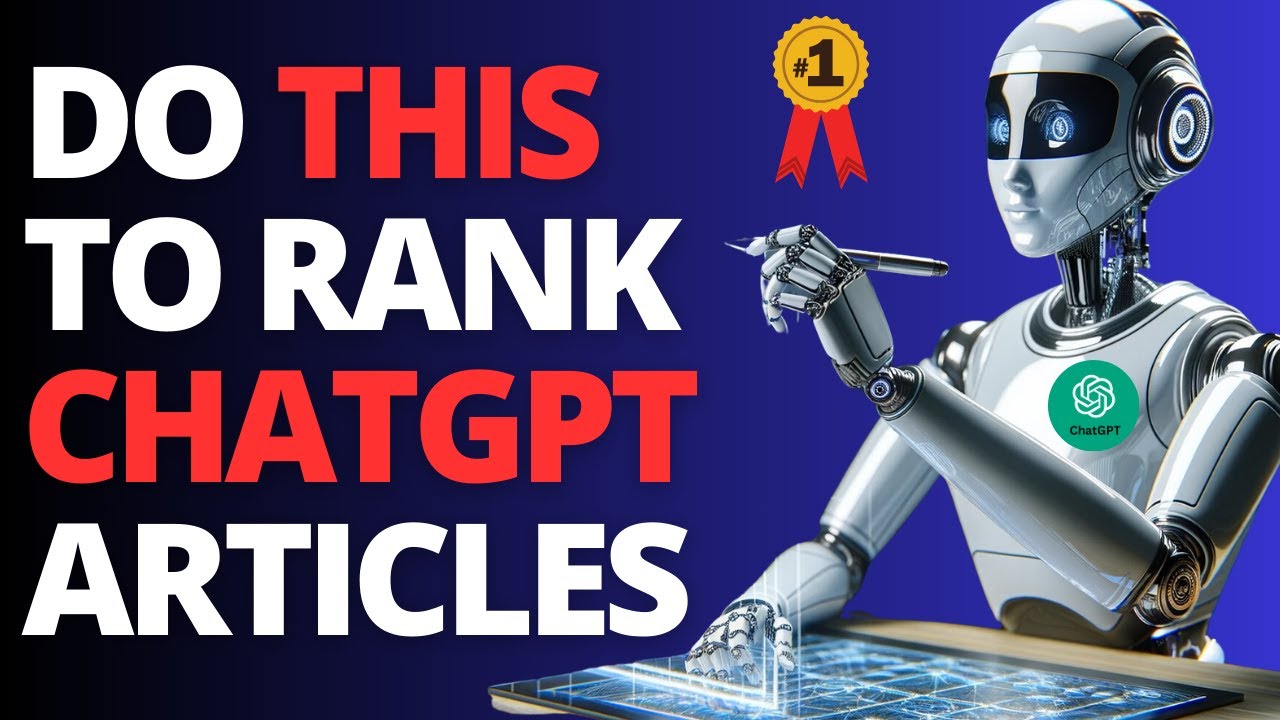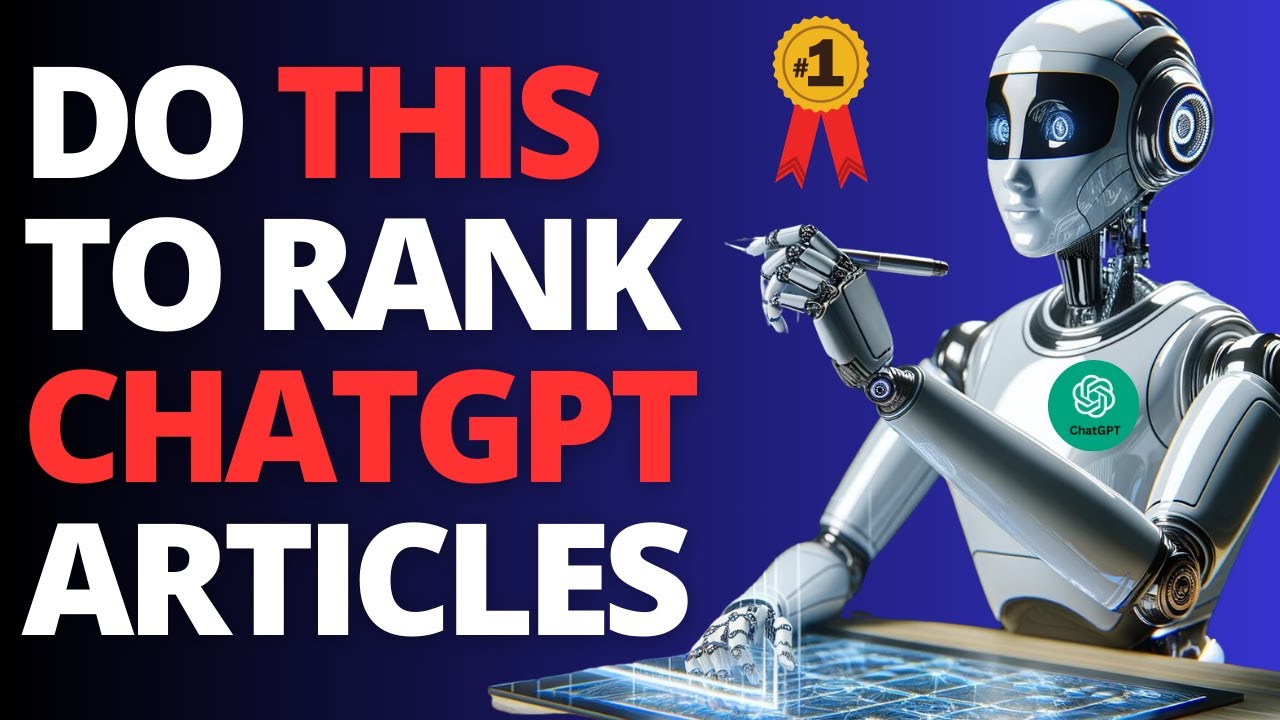In today’s video, titled “5 Ways To Rank Your ChatGPT Articles Instantly” by Digital Creator Avi, you will delve into the world of AI content creation and SEO optimization. This article outlines various techniques to improve the quality and relevance of ChatGPT’s responses, as well as incorporating visual elements like lists, tables, and charts in your articles. You’ll also learn valuable tips for optimizing your content for search engines and staying ahead of competitors. Whether you’re a content creator, marketer, or AI enthusiast, these strategies will empower you to elevate your ChatGPT articles to new heights of visibility and engagement. Subscribe for more tips on AI content creation and SEO strategies and let’s transform your ChatGPT articles into SEO goldmines!
Crafting Precise Prompts for Better Output

Understanding the Importance of Precise Prompts
Crafting precise prompts is essential for obtaining high-quality outputs from AI systems like ChatGPT. By providing clear and specific instructions, you can ensure that the generated content meets your desired outcome. Precise prompts also help in improving the relevance and accuracy of the AI’s responses. Whether you are a content creator, marketer, or AI enthusiast, mastering the art of crafting precise prompts can greatly enhance the effectiveness of your AI-generated articles.
Techniques for Crafting Precise Prompts
1. Priming the AI
Priming the AI involves specifying the desired outcome and feeding it relevant information. By priming the AI, you are essentially guiding it towards understanding the purpose and tone of the content you want to create. To effectively prime the AI, consider the following techniques:
1.1 Specifying the Desired Outcome
Clearly communicate to the AI what you expect from the generated content. Specify the type of article (e.g., informative, persuasive, instructional) and the target audience. For example, you can instruct the AI to write a fact-checked blog post that is engaging and factually accurate. By providing this guidance, you set a clear direction for the AI’s writing style and tone.
1.2 Feeding Relevant Information
Provide the AI with relevant information about your brand, the topic at hand, and any specific guidelines or best practices. This can include industry-specific terminology, preferred writing styles, and key points to include in the content. Giving the AI access to this information helps it generate more accurate and informative responses.
2. Prompting the AI
Prompting the AI involves giving specific instructions for generating content. By structuring your prompts effectively, you can improve the quality and depth of the AI’s responses. Consider the following techniques when prompting the AI:
2.1 Giving Specific Instructions
Instead of asking the AI to generate a full article at once, break down the writing process into sections. Start by generating an outline that outlines the main sections and subtopics of your article. Then, prompt the AI to write each section individually, focusing on one topic at a time. This approach allows the AI to concentrate on a specific task, resulting in more detailed and in-depth content.
2.2 Writing Sections Individually
When instructing the AI to write each section, be clear about the order in which you want them to be written. For example, start with the introduction, then move on to the main body paragraphs, and conclude with a summary or conclusion. This step-by-step approach ensures that the AI follows a logical structure and maintains coherence throughout the article.
Incorporating Visual Elements in Articles
To make your AI-generated articles visually appealing and information-rich, it’s important to incorporate visual elements such as tables, charts, lists, links, and images. Visual elements not only enhance the readability and skimmability of your content but also contribute to its rankability on search engines. Consider the following tips for incorporating visual elements:
3. Including Tables, Charts, Lists, Links, and Images
When prompting the AI to generate content, specify that you want the inclusion of tables, charts, and lists to present information in a more organized manner. Additionally, instruct the AI to include relevant links to credible and authoritative sources, improving the overall quality and value of the content. If using the playground mode, you can generate ideas for images or data visualizations and then use additional tools like Dolly to create and insert those visuals into your article.
Optimizing Content for Search Engines
To ensure that your AI-generated content reaches a wider audience and ranks well on search engines like Google, it’s essential to optimize it for SEO. Consider the following techniques for optimizing your content:
4. SEO Formatting
Use SEO best practices when crafting your prompts. Include relevant keywords strategically throughout the content and optimize headings, meta tags, and URLs. Make sure your content follows proper formatting, including the use of heading tags (H1, H2, H3), bullet points, and bolded text. By adhering to SEO formatting guidelines, you increase the visibility and searchability of your AI-generated articles.
Analyzing and Staying Ahead of Competitors
To stay competitive in the AI content creation landscape, it’s important to analyze your competitors and continuously adapt your strategies. Consider the following techniques for competitor analysis:
5. Strategies for Competitor Analysis
Continuously monitor the content produced by your competitors. Analyze their writing styles, target keywords, and content structure. Identify gaps or opportunities in their content that you can leverage to differentiate yourself. Stay up to date with industry trends and incorporate innovative approaches into your own content creation process. By staying ahead of your competitors, you can create AI-generated articles that stand out and capture your audience’s attention.
Suitable Audience for Crafting Precise Prompts
The techniques discussed above are applicable to various professionals involved in content creation, SEO optimization, and AI enthusiasts. Here are some specific audiences who can benefit from crafting precise prompts for better output:
6. Content Creators
Content creators can leverage the power of AI to generate high-quality articles efficiently. By mastering the art of crafting precise prompts, content creators can ensure that the AI produces content that aligns with their brand’s voice and meets their audience’s expectations. Crafting precise prompts can also help content creators produce more in-depth and engaging articles.
7. Marketers
Marketers can use AI-generated articles to communicate their brand’s message effectively. By crafting precise prompts, marketers can guide the AI to generate content that resonates with their target audience. This enables marketers to create valuable and shareable content, helping them build brand awareness and drive traffic to their websites.
8. AI Enthusiasts
For AI enthusiasts, crafting precise prompts is an opportunity to explore the capabilities of AI systems like ChatGPT. By experimenting with different prompts and techniques, AI enthusiasts can uncover new ways to optimize AI-generated content and push the boundaries of what is possible with AI technology.
Conclusion
Crafting precise prompts is key to achieving better outputs from AI systems like ChatGPT. By understanding the importance of precise prompts, applying techniques to craft them effectively, and incorporating visual elements and SEO optimization, you can transform your AI-generated articles into SEO goldmines. Whether you’re a content creator, marketer, or AI enthusiast, the strategies discussed in this article will empower you to elevate your ChatGPT articles to new heights of visibility and engagement. Embrace the power of crafting precise prompts and enjoy the benefits of generating high-quality AI content.
